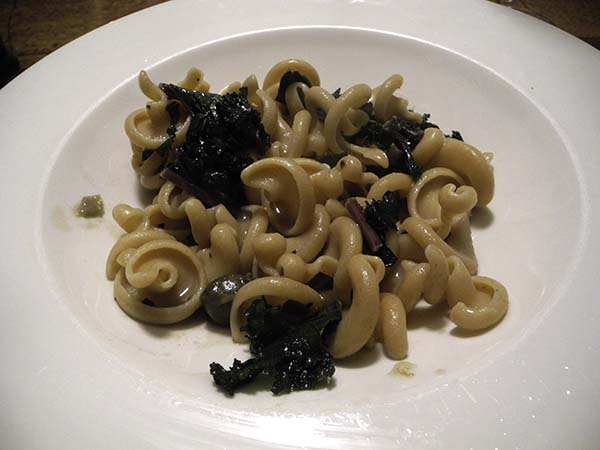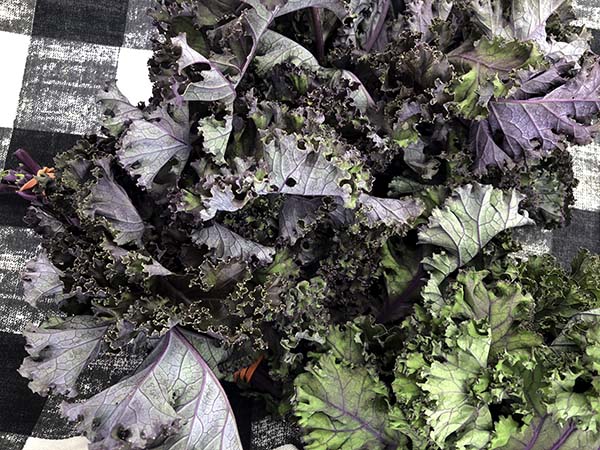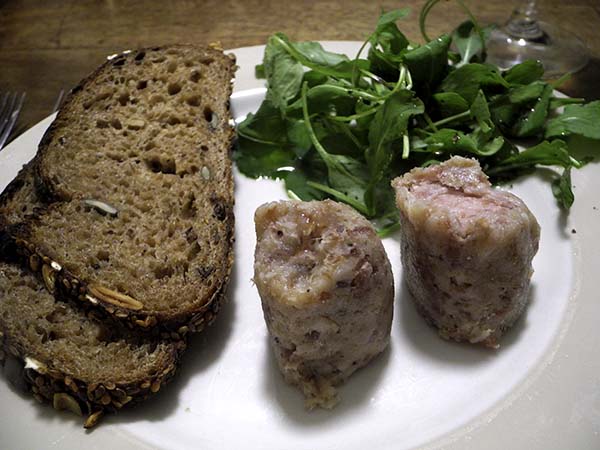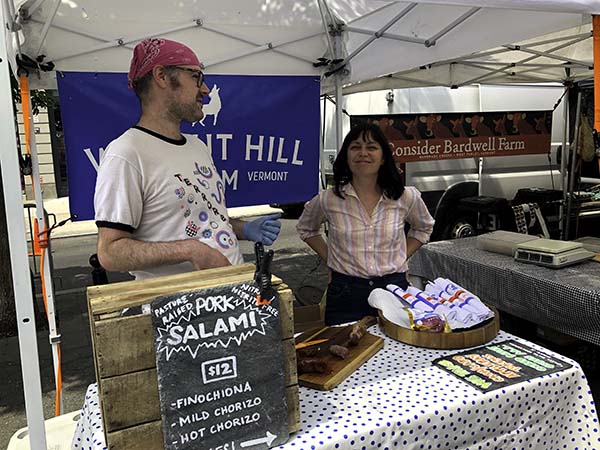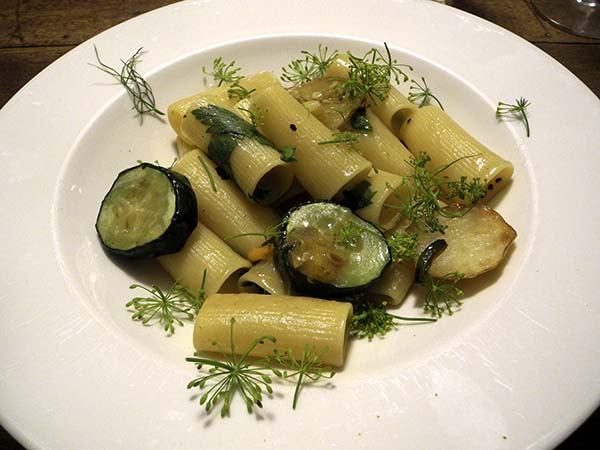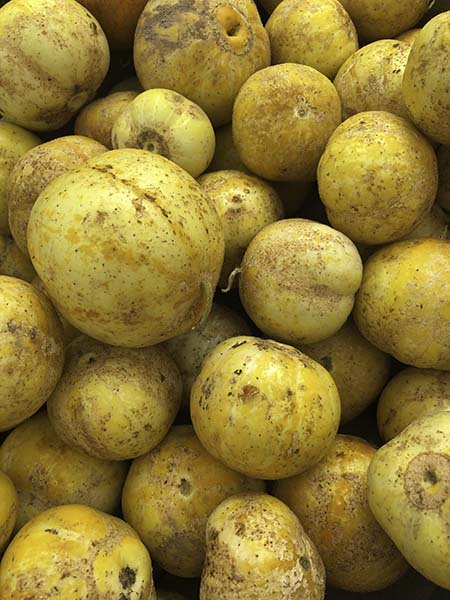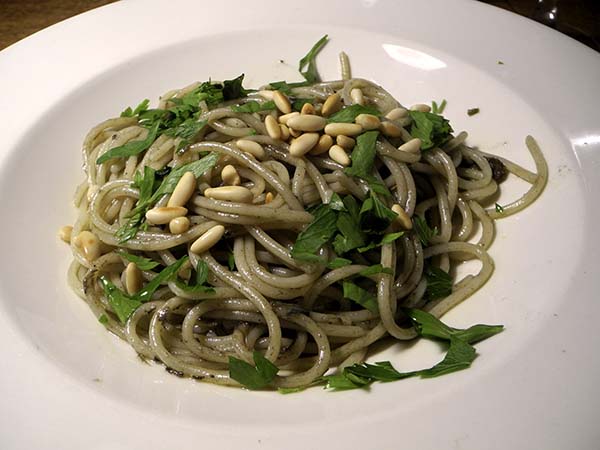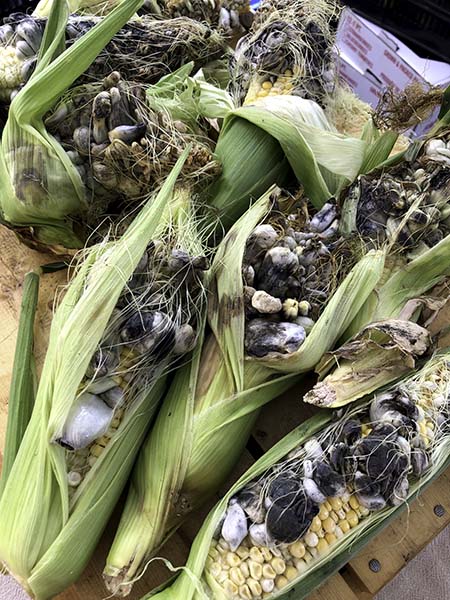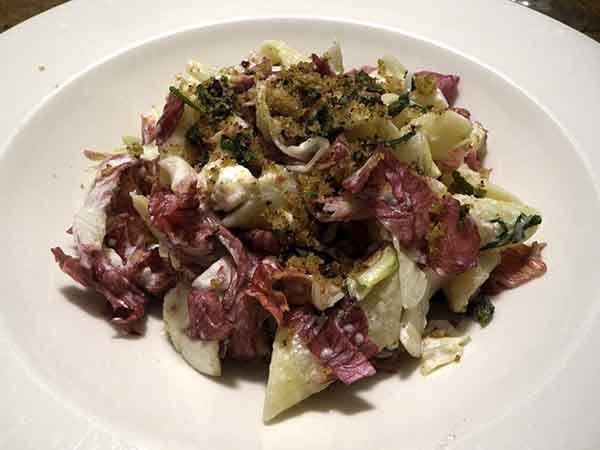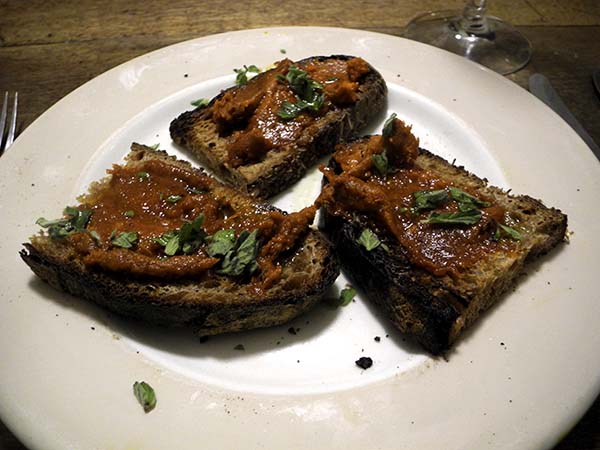
I don’t know how to characterize this meal, but it was delicious.
- a few ounces of ‘nduja, a classic Calabrian spreadable salumi (“loosely based on the French andouille introduced in the 13th century by the Angevins” – Wikipedia) now made locally by Rico and Jill of Walnut Hill Farm in Pawlet, Vermont, and available in the Union Square Greenmarket, spread on slices of ‘Whole wheat Redeemer Bread’ (simply wheat, water, salt) from Lost Bread Co. that had first been toasted with my ‘Camp-A-Toaster‘ on top of our 1930’s Magic Chef range, the salumi sprinkled with chopped fresh za’atar [origanum syriacum] from TransGenerational Farm and drizzled with olive oil
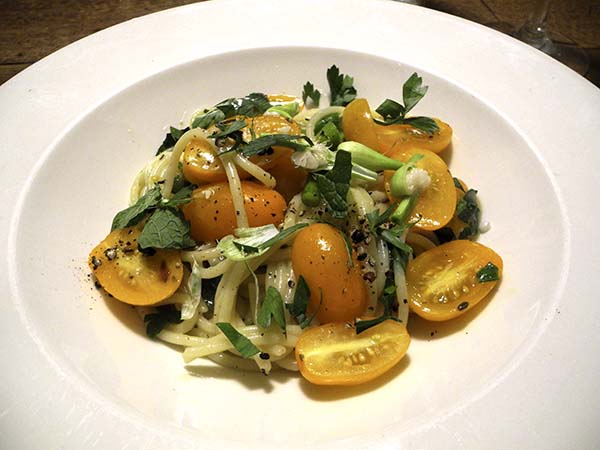
The main course was only a little more elaborate, although totally improvised from what I had on hand. It was basically a long pasta with golden grape tomatoes and several fresh or dry seasoning ingredients.
- a few chopped garlic scapes from Phillips Farms sautéed in a little olive oil over moderate heat inside a large antique copper pot until they had softened, then adding a quarter to a half teaspoon of some really great dried Semi di Finocchietto Ibleo (wild Sicilian fennel seed harvested in the Iblei Mountains), from Eataly Flatiron, then part of a habanada pepper from Campo Rosso Farm, sliced thinly, and a small stem of celery from Norwich Meadow Farm, finely chopped, and stirring a bit more before adding eight ounces of al dente-cooked and drained Afeltra spaghettoni, from Eataly Flatiron and almost a cup of cooking water, the mix stirred over medium to high heat until the liquid had emulsified, and more than a handful of lengthwise-halved golden grape or pear-shaped tomatoes from Alex’s Tomato Farm, that had been sourced at the Saturday 23rd St Greenmarket, added and stirred into the pasta, the mix seasoned with a little freshly-ground black pepper, and some torn peppermint peppermint from Alex’s Tomato Farm in the Saturday 23rd Street farmers market and chopped lovage from Keith’s Farm in the Union Square Greenmarket, arranged in 2 shallow bowls, more mint and lovage added on top, as well as some chopped celery leaves and sliced garlic flower buds, and drizzled around the edges with a little olive oil
- the wine throughout the meal was a Spanish (Bierzo) white, Bierzo Godello, Abad Dom Bueno 2017, from Astor Wines
- the music throughout (it was the American Labor day) was Roy Harris, Symphony No. 1 ‘1933’ and his Concerto for Violin and Orchestra’
